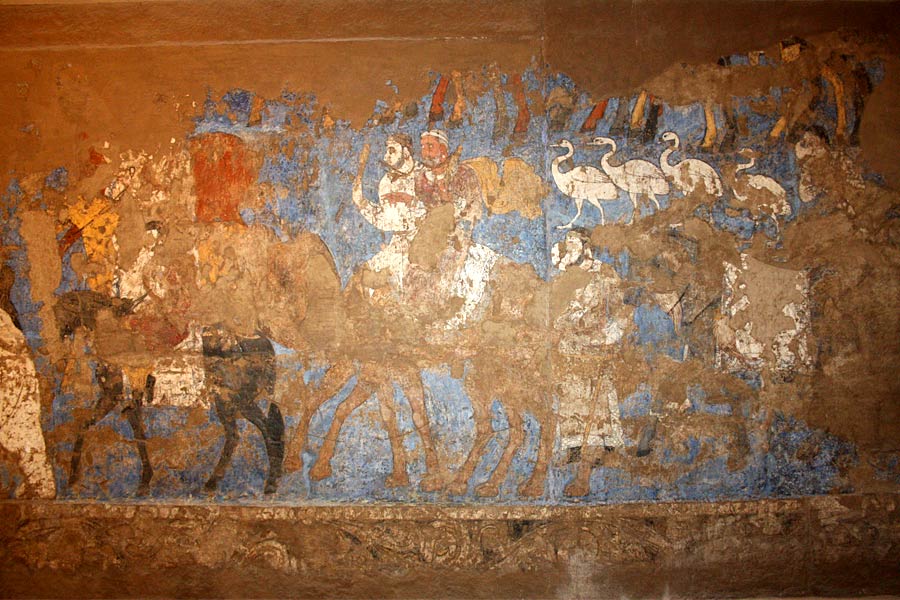Beginning of the Silk Road

"Winged" horses of Davan or the origins of the Silk Road
The start of the Silk Road is dated 2nd century BC when Chinese ambassador Zhang Qian visited the countries of Central Asia with diplomatic mission. Until the 2nd century BC the way from Europe to Asia stopped at the borders of China because the great ranges of Asia, the Tien Shan, the Kun-Lun, the Karakorum, the Hindu Kush, and the Himalayas, protected the ancient Chinese civilization from the rest of the world. It was by accident that the richest western direction was opened. One of nomadic tribes, who were allies with China, was driven out by another tribe, openly hostile to China. The former ally left to the West. The Chinese emperor sent the embassy led by Zhang Qian . Having crossed the Taklamakan desert, the mountains of Tien –Shan; having spent ten years in captivity, Zhang Qian found the former allies in the oases of Central Asia. Zhang Qian was amazed by what he saw: just single Fergana valley hosted more than 70 big and small towns and settlements with the developed crafts and agriculture. The townspeople traded with India, the Near and Middle East, and the countries of the ancient world. When Zhang Qian came back to China, he told the emperor about the countries lying to the West from China, about how rich they were. He told about the thoroughbred Davani “winged” horses which were far better than small Chinese ones. The emperor burnt with the desire to have such horses in his possession since it would give him huge advantage in the fight against nomads. Soon the embassies were sent to Central Asia. Among other gifts they brought Chinese silk there.
That was how ancient civilizations of Central Asia and China and later, of Mediterranean and India met. One went from the West, from the countries of the Mediterranean to Central Asia, explored and traveled by Greeks during Alexander the Great campaigns and the other, leading from the East, from Hang empire to Central Asia, explored by Zhang Qian who traveled that land from the north to the south via Davan, Kangyui, Soghd, and Bactria.
However, before that, there had been several roads which were used for trade between the East and the West. Those were separate sectors of the future way Silk Road. The rise of commercial relations was promoted by extraction of semiprecious stones such as lazurites, nephrites, carnelians, turquoises in the mountains of Central Asia. There was even the so-called “Lazurite Way” which was used for taking that stone from Central Asia to Iran, Mesopotamia and even to Egypt. At the same time “Nephrite Way” connected Khotan and Yarkand with Northern China. Besides that, carnelian was taken out to the countries of Westerns Asia from Sogdiana and Bactria, and turquoise - from Khoresm. All those routes, eventually, joined the Silk Road.
There were periods in the history of the Road when it was almost completely controlled by one state: Turkic khaganate in the 6th century, the empire of Genghis Khan in the second quarter of the 13th century and Timurid Empire in the last third of the 14th century. However, because of the huge distance it was practically impossible to control all the sectors.

